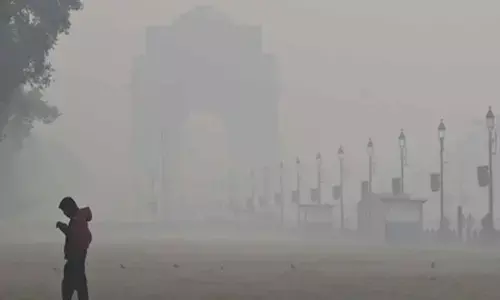Cut back on tree cutting, for future gen sake

According to Global Forest Watch, from 2002 to 2023, India was said to have lost 414 kha of humid primary forest, making up 18% of its total tree cover loss in the same time period.
According to Global Forest Watch, from 2002 to 2023, India was said to have lost 414 kha of humid primary forest, making up 18% of its total tree cover loss in the same time period. The total area of humid primary forest in India decreased by 4.1% in this time period. During 2001-2023, India lost 2.33 Mha of tree cover, equivalent to a 6.0% decrease in tree cover since 2000, and 1.20 Gt of CO₂e emissions.
Some studies have pointed out that during 2015-20, the country recorded the highest rise in deforestation in the last 30 years. It was only second to Brazil, with average deforestation of 668,400 hectares (ha), according to Utility Bidder, a United Kingdom-based comparison site for energy and utility costs. With a difference of 2,84,400 hectares in forestry loss between 1990 and 2020, India has seen the biggest increase in deforestation.
While cattle feeding, growing cultivation in forest areas and logging of trees for making products or furniture are regarded as major causes, tree felling by governments and private individuals and bodies in the name of infrastructure projects, human habitation or industrial progress is also increasingly a big concern in the country. The activity is going on indiscriminately across the country, save for a few incidents where courts stepped in to put a stop.
Nevertheless, Utility Bidder from its assessment of India’s forestation efforts by Central and State governments, despite increased levels of deforestation, observed that the country is committed to restoring its forests, with plans to re-establish over 20 million hectares of land by 2030. But the increasing felling of trees, one may call it green massacre, has emerged a grave concern. We need to cut back on the rate of cutting down trees. A worrying case in point is felling of
640 trees for the construction of an 11-km road in South Delhi Ridge. It caused consternation among the concerned populace, drawing the ire of even the apex court of the land.
Why should we worry about deforestation, tree felling etc., at all? Besides causing loss of habitat for wildlife, it also results in deterioration of soil, and is also a big contributor to global warming. When forests are cut down, they release large amounts of carbon dioxide into the atmosphere – a greenhouse gas that precipitates climate change (the ongoing increase in global average temperature). The effects include hotter temperatures and extended periods of drought. We have just experienced another warmer summer. According to fresh data of India Meteorological Department (IMD), India has suffered the highest number of heatwave days in the past three years. It faced 446 days of heatwave days in different regions. 2024 has seen the highest number of heatwave days, with a record jump of 125% in heatwave days in May and 66% increase in April.
Heatwaves take a toll on trees, leading to destruction of forests, including green cover in urban areas. Besides being our intimate connect with nature, there are repositories of oxygen, thus providing sustenance to us and animal world. A tree can produce up to 30,000 gallons of oxygen in its lifetime, or around 108 gallons per year on average.
Loss of green cover shrinks atmospheric oxygen levels. If not curtailed, the degradation will put the very life on the planet at stake. Deforestation and burning of fossil fuels are definitely causing decline in oxygen levels. Urbanisation and mining are other major causes. Human-induced extinction of forests or green habitats is faster and greater than climate pressures. Our indifference to loss of green cover, though, stems on account of no immediate threat on a large scale.

















